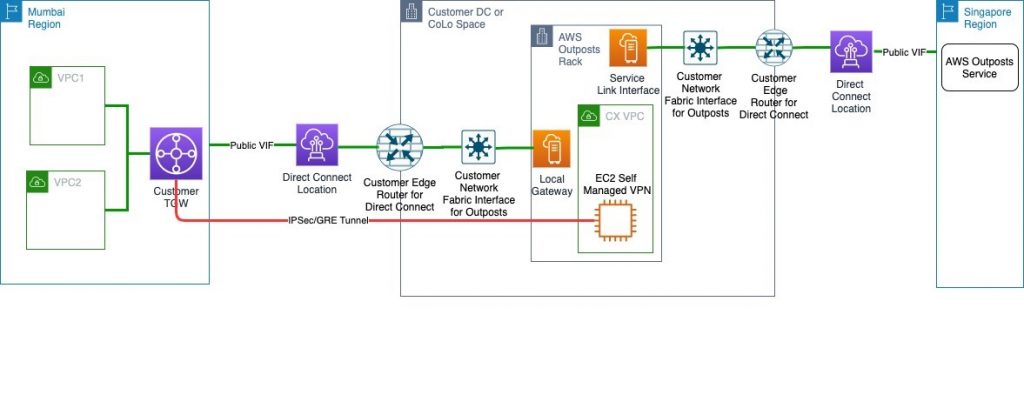AWS Architecture Blog
Category: AWS Direct Connect
Overview of Data Transfer Costs for Common Architectures
Data transfer charges are often overlooked while architecting a solution in AWS. Considering data transfer charges while making architectural decisions can help save costs. This blog post will help identify potential data transfer charges you may encounter while operating your workload on AWS. Service charges are out of scope for this blog, but should be […]
Field Notes: Extend Your Web Application Deployment to the China Region Using AWS Direct Connect
Organizations running workloads on AWS often want to take advantage of the AWS global footprint to expand operations globally. Web applications hosted in a single AWS Region can be reached worldwide, but latency issues can negatively affect performance and the user experience. Web applications are often powered by underlying databases, such as a database running […]
Architecting SWIFT Connectivity on Amazon Web Services (AWS)
The adoption of the ISO 20022 messaging standard by the financial industry will benefit all participants across the payments chain: banks, market infrastructures, corporate, and consumers. By moving the SWIFT messaging and communications infrastructure stack onto AWS, customers can speed their adoption of ISO 20022. At the same time, they can reduce costs, and improve […]
Using Route 53 Private Hosted Zones for Cross-account Multi-region Architectures
This post was co-written by Anandprasanna Gaitonde, AWS Solutions Architect and John Bickle, Senior Technical Account Manager, AWS Enterprise Support Introduction Many AWS customers have internal business applications spread over multiple AWS accounts and on-premises to support different business units. In such environments, you may find a consistent view of DNS records and domain names […]
Field Notes: Setting Up Disaster Recovery in a Different Seismic Zone Using AWS Outposts
Recovering your mission-critical workloads from outages is essential for business continuity and providing services to customers with little or no interruption. That’s why many customers replicate their mission-critical workloads in multiple places using a Disaster Recovery (DR) strategy suited for their needs. With AWS, a customer can achieve this by deploying multi Availability Zone High-Availability […]
New Whitepaper: Selecting & Designing Your Hybrid Connectivity Model
Introduction Many organizations need to connect their on-premises data centers, remote sites, and the cloud. A hybrid network connects these different environments. A modern organization uses an extensive array of IT resources. In the past, it was common to host these resources in an on-premises data center or a colocation facility. With the increased adoption […]
Leveraging AWS Global Backbone for Data Center Migration and Global Expansion
Many companies run their applications in data centers, server rooms or in space rented from colocation providers in multiple countries. Those companies usually have a mixture of a small number of central large data centers where their core systems are hosted in several smaller, regional data centers. These offices in the multiple countries require access […]
BBVA: Helping Global Remote Working with Amazon AppStream 2.0
This post was co-written with Javier Jose Pecete, Cloud Security Architect at BBVA, and Javier Sanz Enjuto, Head of Platform Protection – Security Architecture at BBVA. Introduction Speed and elasticity are key when you are faced with unexpected scenarios such as a massive employee workforce working from home or running more workloads on the public […]
One to Many: Evolving VPC Design
Since its inception, the Amazon Virtual Private Cloud (VPC) has acted as the embodiment of security and privacy for customers who are looking to run their applications in a controlled, private, secure, and isolated environment. This logically isolated space has evolved, and in its evolution has increased the avenues that customers can take to create […]
New Zealand Internet Connectivity to AWS
Update, August 2022: The Southern Cross Next Cable Network is now online, adding an additional network with a capacity of 72 terabits per second (tbps) to Aotearoa-New Zealand’s international connectivity. Amazon Web Services (AWS) serves more than a million private and public sector organizations all over the world from its extensive and expanding global infrastructure. Like […]









